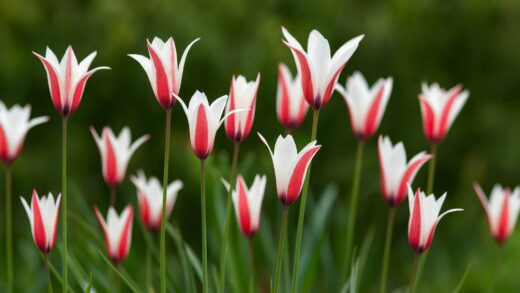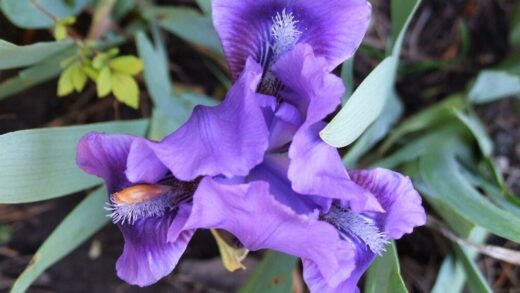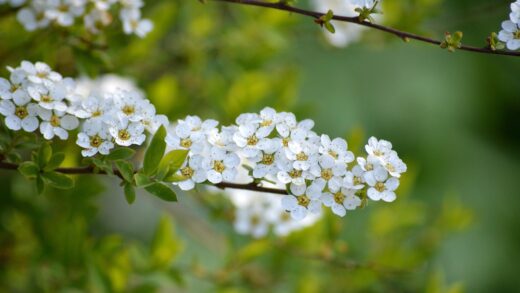Pineapple sage, a delightful and aromatic herb, is a rewarding addition to any garden, prized not only for its vibrant, late-season scarlet flowers but also for the sweet, pineapple-like fragrance of its leaves. To cultivate this plant successfully, one must understand its fundamental needs, which are deeply rooted in its native habitat of Mexico and Guatemala. It thrives in conditions that mimic this subtropical environment, requiring a balance of warmth, sunlight, and well-drained soil to truly flourish. Proper care ensures not just survival, but a vigorous plant that will produce abundant foliage and a spectacular floral display that attracts hummingbirds and butterflies, making it a dynamic element in the garden’s ecosystem. Neglecting its basic requirements can lead to a leggy, non-flowering plant that is susceptible to a host of problems.
Successful cultivation begins with selecting the right location, as this decision impacts all other aspects of care. Pineapple sage demands a spot that receives at least six to eight hours of direct sunlight each day. This ample light exposure is crucial for developing the essential oils that give the leaves their characteristic fragrance and for initiating the budding process for its brilliant red flowers. In hotter climates, a location with morning sun and some afternoon shade can be beneficial, as it protects the plant from the most intense heat of the day, which can cause stress and leaf scorch. The chosen site should also offer protection from strong winds, which can easily damage the plant’s relatively tender stems, leading to breakage and a less appealing shape.
The soil composition is another critical factor for the long-term health of pineapple sage. It performs best in soil that is rich in organic matter and, most importantly, offers excellent drainage. Poorly drained, heavy clay soils are a significant threat, as they retain excessive moisture around the root zone, creating an anaerobic environment that can quickly lead to root rot, a fatal condition for this species. To improve soil structure before planting, you can amend the area with compost, aged manure, or coarse sand. This not only enhances drainage but also provides a slow release of essential nutrients, supporting steady growth throughout the season and reducing the need for frequent supplemental feeding.
Finally, understanding its temperature and hardiness limitations is key to its perennial success. Pineapple sage is considered a tender perennial, generally hardy in USDA zones 8 through 11. In these warmer regions, it can be grown in the ground year-round, often developing into a substantial, shrub-like plant. In colder climates, however, it must be treated as an annual or brought indoors for the winter. It is highly sensitive to frost, and the first hard frost will typically kill the top growth back to the ground. Therefore, gardeners in cooler zones must plan for winter protection or be prepared to replant it each spring, often from cuttings taken at the end of the previous season.
Foundational environmental needs
The primary environmental factor governing the success of pineapple sage is its requirement for abundant sunlight. This plant is a true sun-lover, converting light energy into the lush foliage and spectacular flowers it is known for. Insufficient light results in a plant that is etiolated, or “leggy,” with long, weak stems and sparse leaves as it stretches in search of more light. This weakened state not only compromises its aesthetic appeal but also significantly reduces its ability to flower, often resulting in a bloomless season. For optimal performance, the plant should be situated in the sunniest part of the garden, where it can bask in direct light for the majority of the day.
More articles on this topic
While it loves the sun, the quality of the soil is equally important in establishing a healthy plant. Pineapple sage is not overly demanding in terms of soil fertility, but it is absolutely intolerant of “wet feet.” The ideal substrate is a loamy or sandy soil that allows water to percolate freely, preventing waterlogging around the sensitive root system. Before planting, it is highly advisable to assess the drainage of the chosen site by digging a hole and filling it with water; if the water does not drain away within an hour, the location is unsuitable. In such cases, planting in raised beds or large containers filled with a high-quality potting mix can provide the necessary drainage for success.
The physical structure and location within the garden also play a role in its overall health. Due to its potential to reach a significant size, sometimes growing up to 1.5 meters in both height and width in a single season, it requires adequate space to spread out. Planting it too close to other specimens can lead to competition for light, water, and nutrients, and can also impede air circulation. Poor air circulation creates a humid microclimate around the foliage, which is an open invitation for fungal diseases like powdery mildew to take hold, a common affliction for this species in suboptimal conditions.
Lastly, replicating its native climate as much as possible will yield the best results. Pineapple sage thrives in warmth and is most vigorous during the hot, long days of summer. It appreciates consistent warmth and does not perform well in areas with cool summers or dramatic temperature fluctuations. Providing a sheltered location near a south-facing wall or fence can create a warmer microclimate, absorbing and radiating heat, which can help the plant reach its full potential, especially in climates that are at the cooler end of its preferred range. This extra warmth can extend its growing season and encourage a more prolific floral display late in the autumn.
Watering and humidity essentials
Proper irrigation is a cornerstone of effective pineapple sage care, as the plant requires a delicate balance of moisture. It needs consistently moist soil to support its rapid growth, especially during the peak of the growing season, but it is also highly susceptible to the dangers of overwatering. The best practice is to water deeply and infrequently, rather than providing small, shallow amounts of water every day. Deep watering encourages the roots to grow further down into the soil in search of moisture, creating a more robust and drought-tolerant root system. You should allow the top few centimeters of soil to dry out completely between waterings to ensure the roots are not constantly saturated.
More articles on this topic
The method of water application is also important for preventing common diseases. It is always recommended to water pineapple sage at the base of the plant, delivering water directly to the root zone. Using soaker hoses or drip irrigation is an excellent way to achieve this efficiently. Avoid using overhead sprinklers, as wetting the foliage, especially in the evening, can create the perfect damp conditions for fungal pathogens like powdery mildew to develop and spread. If you must water from above, do so early in the morning so that the leaves have ample time to dry in the sun before nightfall.
Humidity is another environmental factor to consider, though pineapple sage is reasonably adaptable. It is not particularly fond of either extremely dry or excessively humid conditions. In very arid climates, the leaves may show signs of stress, such as browning edges, and the plant’s overall growth may be slower. In overly humid regions, the primary concern is the increased risk of fungal diseases due to reduced evaporation from the leaf surfaces. Ensuring good air circulation around the plant by providing adequate spacing is the most effective way to mitigate the risks associated with high humidity, allowing breezes to flow through and keep the foliage dry.
Monitoring the plant for signs of water-related stress is a crucial skill for any gardener. An under-watered pineapple sage will begin to wilt, with its leaves drooping noticeably during the heat of the day. If the wilting persists into the cooler evening hours, it is a clear indication that the plant needs a thorough watering. Conversely, an over-watered plant may also wilt because its roots are suffocating and unable to take up water, but this will be accompanied by yellowing lower leaves and potentially soft, mushy stems near the soil line. Learning to distinguish between these signs is key to providing the correct response and maintaining a healthy plant.
Nutritional support and feeding
Pineapple sage is a relatively vigorous grower and, as such, benefits from a consistent supply of nutrients throughout its active growing period. However, it is important to avoid excessive fertilization, which can have unintended negative consequences. Over-fertilizing, particularly with high-nitrogen formulas, can stimulate a great deal of lush, green foliage at the expense of flower production. The plant will look healthy and leafy, but you may be left wondering why the brilliant scarlet flowers have failed to appear in the autumn. The goal is to provide balanced nutrition that supports both vegetative growth and the eventual development of buds.
The ideal approach to feeding pineapple sage is to use a balanced, all-purpose fertilizer. A liquid fertilizer diluted to half-strength, applied every four to six weeks from spring through late summer, is generally sufficient to meet its needs. Alternatively, you can incorporate a slow-release granular fertilizer into the soil at the time of planting, which will provide a steady stream of nutrients over several months. This method is often easier for the gardener and provides more consistent nourishment for the plant. Always follow the application rates recommended on the product label to avoid over-feeding and potential fertilizer burn to the roots.
Organic amendments are an excellent way to provide nutrients while also improving the soil structure. Working a generous amount of well-rotted compost or aged manure into the garden bed before planting provides a fantastic foundation for the entire season. Compost not only supplies a wide range of essential macro- and micronutrients but also enhances soil drainage and moisture retention. You can also apply a top dressing of compost around the base of the plant mid-season to give it an additional boost as it enters its most active growth phase leading up to flowering. This mimics the natural nutrient cycling that occurs in its native environment.
It is crucial to cease all fertilization by the end of summer or early autumn. This signals to the plant that it is time to slow down its vegetative growth and shift its energy towards producing flowers. Late-season feeding can confuse the plant, encouraging it to continue producing new leaves and stems when it should be focusing on bud development. This is particularly important because pineapple sage is a short-day plant, meaning it initiates flowering in response to the shortening daylight hours of autumn. Tapering off the nutrient supply works in concert with this natural trigger, ensuring a spectacular and timely floral show.
Pruning for health and vigor
Pruning is an essential practice for maintaining the health, shape, and productivity of pineapple sage. Without regular trimming, the plant can become tall, leggy, and sparse, with woody lower stems and foliage concentrated only at the top. The primary goal of pruning is to encourage a bushier, more compact growth habit. This is best achieved by regularly pinching back the growing tips of the stems throughout the spring and early summer. Simply using your thumb and forefinger to pinch off the top set of leaves on each stem forces the plant to send out new lateral shoots from the nodes below, resulting in a much fuller and more attractive plant.
A more substantial pruning may be necessary at certain times of the year. In early spring, after the last threat of frost has passed, it is a good idea to cut back any old, woody stems from the previous year. This “rejuvenation pruning” encourages the plant to produce fresh, vigorous new growth from its base. You can prune the entire plant back by about one-third to one-half of its size. This hard pruning is especially important for plants that have been overwintered, as it removes any weak or damaged growth and sets the stage for a healthy season ahead.
Throughout the growing season, you should also engage in maintenance pruning. This involves removing any dead, damaged, or diseased leaves and stems as soon as you notice them. This not only improves the plant’s appearance but also helps to prevent the spread of potential diseases. Good sanitation is a key component of integrated pest management. Additionally, this is a good time to lightly shape the plant, trimming any errant stems that disrupt its overall form. This regular attention will keep the plant looking tidy and well-cared-for.
Harvesting the leaves for culinary or aromatic use also serves as a form of pruning. Regularly snipping stems for their fragrant leaves encourages the plant to branch out, similar to the effect of pinching. The best time to harvest leaves is in the morning after the dew has dried, as this is when their essential oil content is at its peak. You can harvest up to a third of the plant’s foliage at any one time without causing undue stress. This functional approach to pruning ensures you get to enjoy the plant’s bounty while simultaneously promoting its healthy, bushy growth.
Seasonal care considerations
Caring for pineapple sage requires a nuanced approach that adapts to the changing seasons, ensuring the plant receives what it needs at each stage of its annual life cycle. In the spring, as the weather warms and the danger of frost subsides, the focus is on establishment and early growth. For plants that have overwintered, this is the time to remove any protective mulch and prune back any dead or damaged stems to encourage vigorous new shoots. For new plants being set out in the garden, ensure the soil is well-prepared with organic matter and provide consistent moisture to help them establish a strong root system. This early care sets the foundation for a robust plant later in the year.
As summer arrives, bringing with it longer days and higher temperatures, pineapple sage enters its period of most active vegetative growth. During this time, the primary tasks are ensuring consistent moisture and providing adequate nutrition. The soil should not be allowed to dry out completely for extended periods, so a regular deep watering schedule is crucial, especially during hot, dry spells. This is also the time to apply a balanced fertilizer every few weeks to support the rapid development of leaves and stems. Regular pinching of the growing tips during early and mid-summer will promote a bushier habit and prevent the plant from becoming too leggy before its flowering season.
Autumn is the season when pineapple sage truly shines, as it is a short-day plant that initiates flowering as the days grow shorter. The key to a spectacular floral display is to cease all fertilization by late summer, which encourages the plant to switch its energy from foliage production to flower development. Continue to provide adequate water, as flowering is a resource-intensive process. This is also the time to start planning for winter. In areas with impending frost, you can take cuttings to propagate new plants for the following year, ensuring the continuation of your stock.
Winter care for pineapple sage is entirely dependent on your climate zone. In frost-free areas (USDA zones 8 and above), the plant can be left in the ground. It may die back to the ground after a light frost but will typically re-sprout from the roots in the spring. Applying a thick layer of mulch around the base of the plant can provide extra insulation for the root system. In colder regions, the plant must be treated as an annual or brought indoors. You can dig up the entire plant, pot it, and keep it in a cool, bright location, or simply rely on the cuttings you took in the autumn to start fresh the following spring.


















